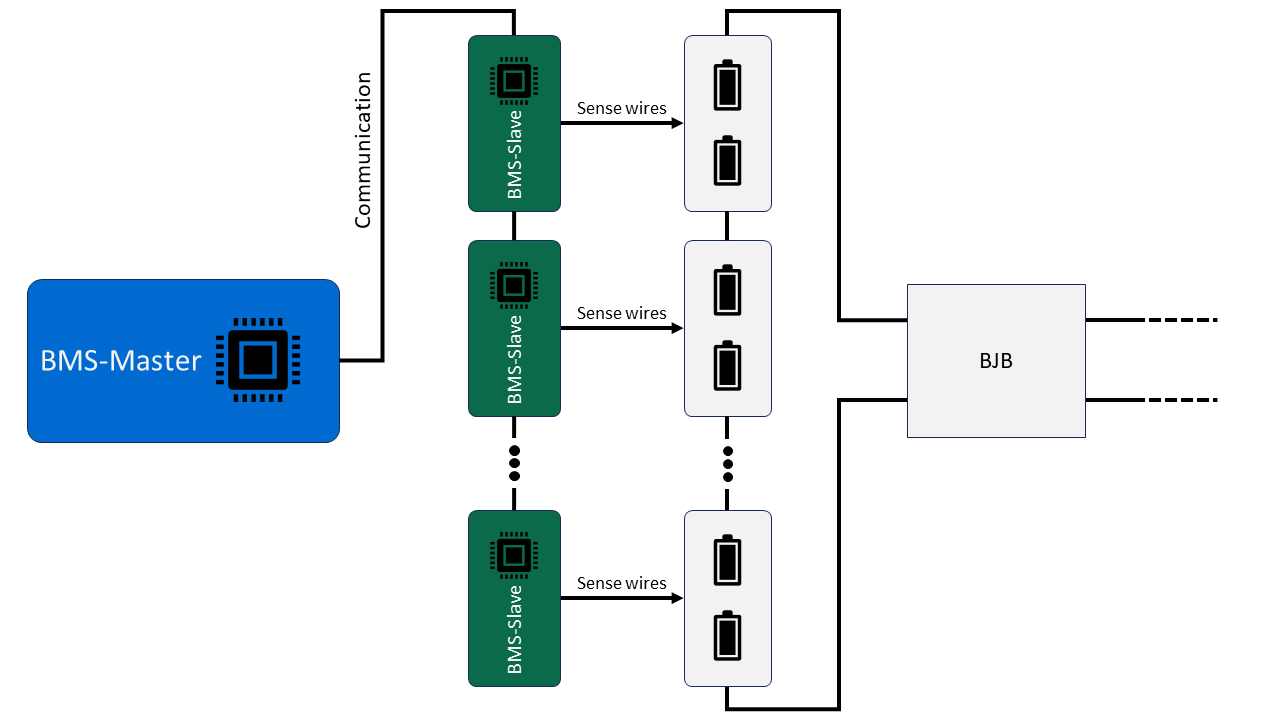2. Naming Conventions
When working with battery systems, it is vital to use consistent wording. The naming conventions used throughout this documentation for the parts of a battery system are illustrated in Fig. 2.1.

Fig. 2.1 Naming conventions for battery system elements
A battery cell or cell is the smallest unit in a battery system. It has one positive terminal and one negative terminal.
Battery cells are usually connected in parallel to enhance the current capability of the system.
Battery cells connected in parallel form a (cell-)block.
Cells or cell blocks put in series form a battery module.
Several modules connected in series form a string.
Several strings connected in parallel form a battery pack.
The highest unit is the battery system. It is formed by the conjunction of a battery pack and a battery junction box (BJB). The BJB contains the elements used to control the current flow like power contactors and fuses.
The BMS consists of two main components,
one BMS-Master and
one or more BMS-Slave(s).
Generally, the BMS-Master is connected to the BMS-Slaves via an communication interface. The BMS-Slaves are wired to the battery cells of a module, so that the BMS-Slaves are able to measure specific physical quantities on the module (see Fig. 2.2).

Fig. 2.2 Naming conventions for BMS components
